After our one-night stand in Mombasa, Nancy and I took a short flight to Zanzibar to meet back up with Caitlin. We left the Green Dragon in the “safe and secure” hands of the Mombasa International Airport security!?
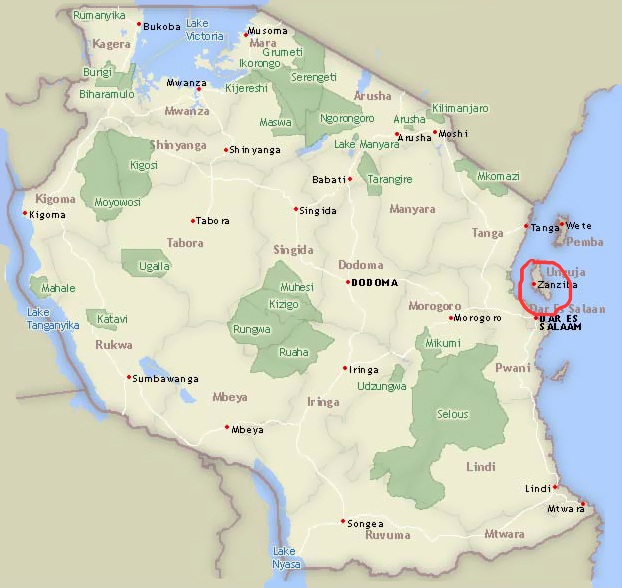
Zanzibar is an insular semi-autonomous region (actually, some 50 or so islands, but only a few are large enough to be inhabited) which united with Tanganyika in 1964 to form the United Republic of Tanzania. It is an archipelago in the Indian Ocean, 16–31 miles off the coast of the African mainland, and consists of many small islands and two large ones: Unguja (the main island, referred to informally as Zanzibar) and Pemba Island. The capital is Zanzibar City, located on the island of Unguja, and its historic center, Stone Town, where we stayed, is a World Heritage Site.
Zanzibar is a major producer of spices, including some of my favorites: clove, nutmeg, cinnamon and black pepper. Indeed, the Zanzibar Archipelago, together with Tanzania’s Mafia Island, are sometimes referred to locally as the “Spice Islands”. We hired a guide to take us on a tour of historic Stone Town and we purchased some fresh spices (cinnamon, vanilla, paprika and more) from one of the local shops. Zanzibar is also a major producer of raffia, which is a natural fiber that comes from the leaves of the Raffia palm tree used in crafts, fashion, and home decor due to its versatility and durability. Tourism in Zanzibar is a more recent activity and has skyrocketed over the past several decades. Tourists, like us, come to Zanzibar not only to explore the island’s culture and history, but also to relax and play on the many beaches. We are here, in part, to enjoy snorkling in the near-shore waters. Caitlin also took advantage of her two days alone prior to our arrival to go scuba diving off one of the nearby islands.
We stayed at the beachside Tembo Hotel, which was an historic building (1883) and it had every bit the feel of one too. We had a single room with 3 beds and large bathroom overlooking a pool and a partial view of the beach and ocean. The hotel opened right onto the beach which provided quick access to the beach and very nice beachside tables for meals. We had several sunset dinners next to the beach. Here are a few shots:
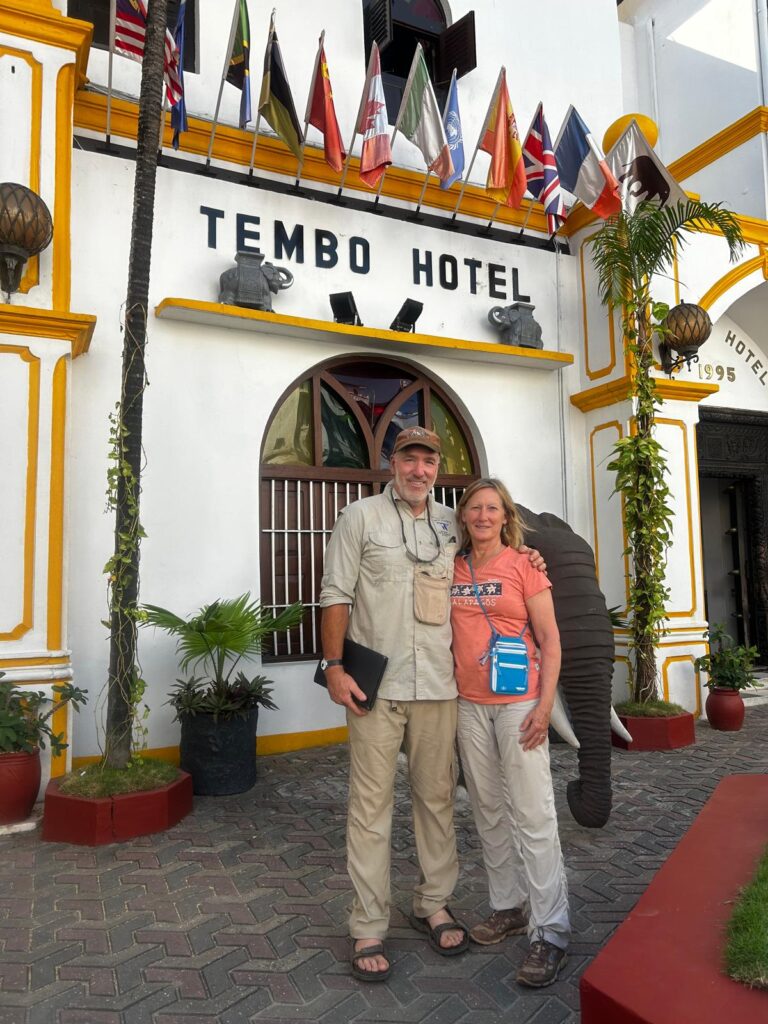
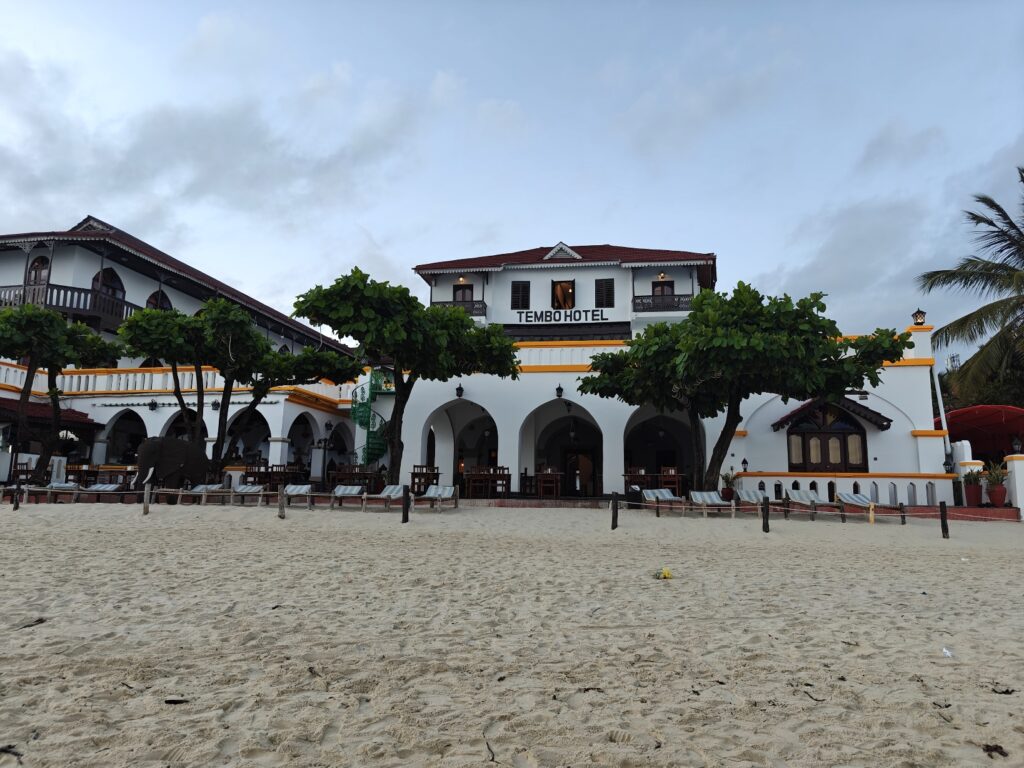
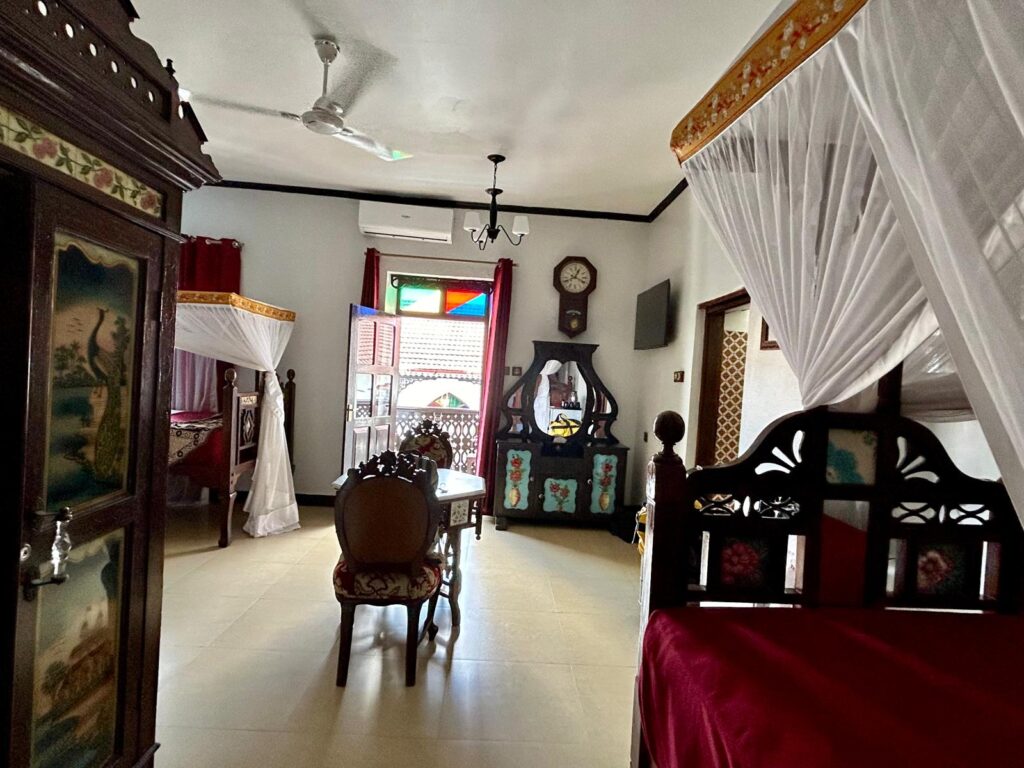
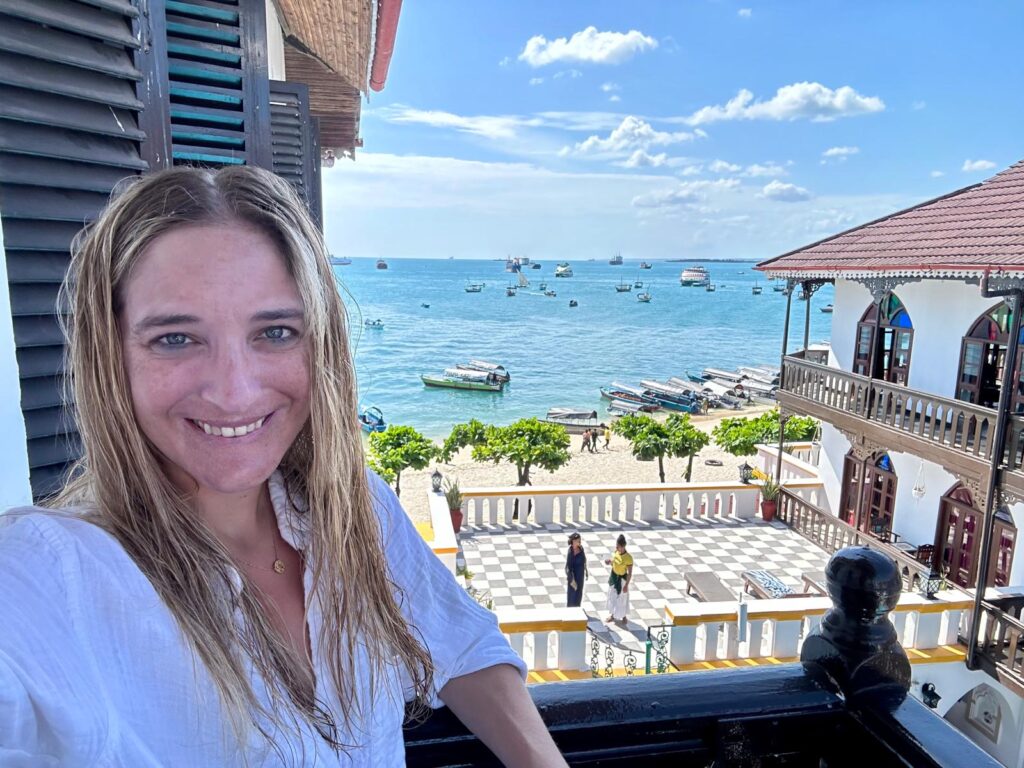
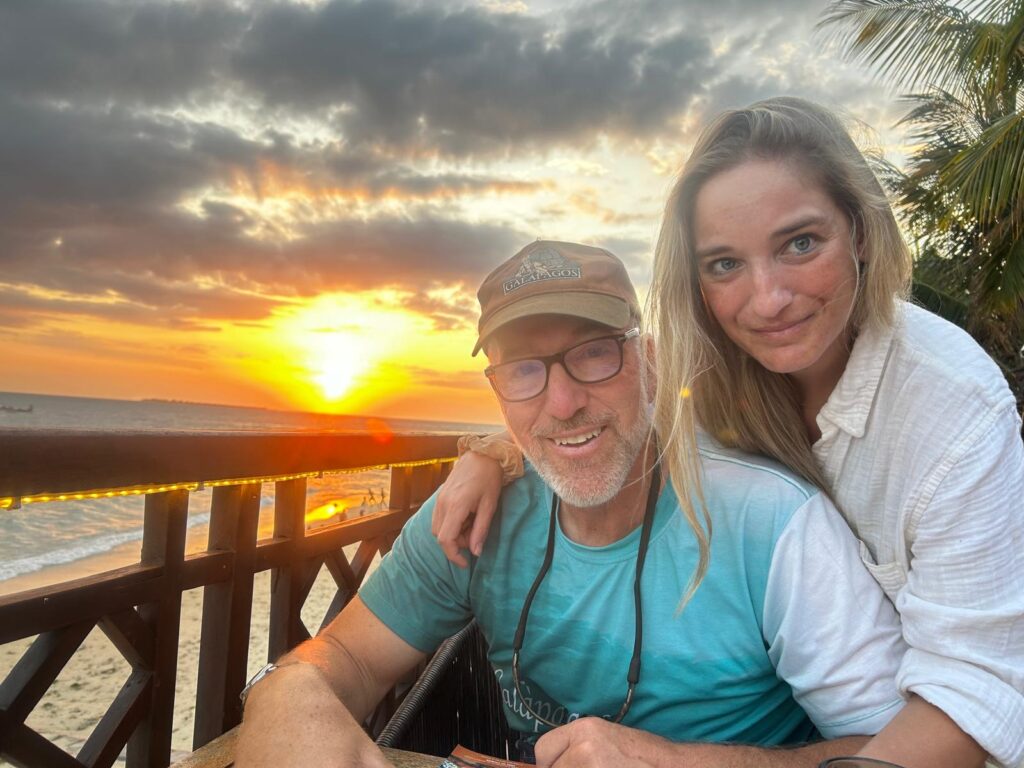

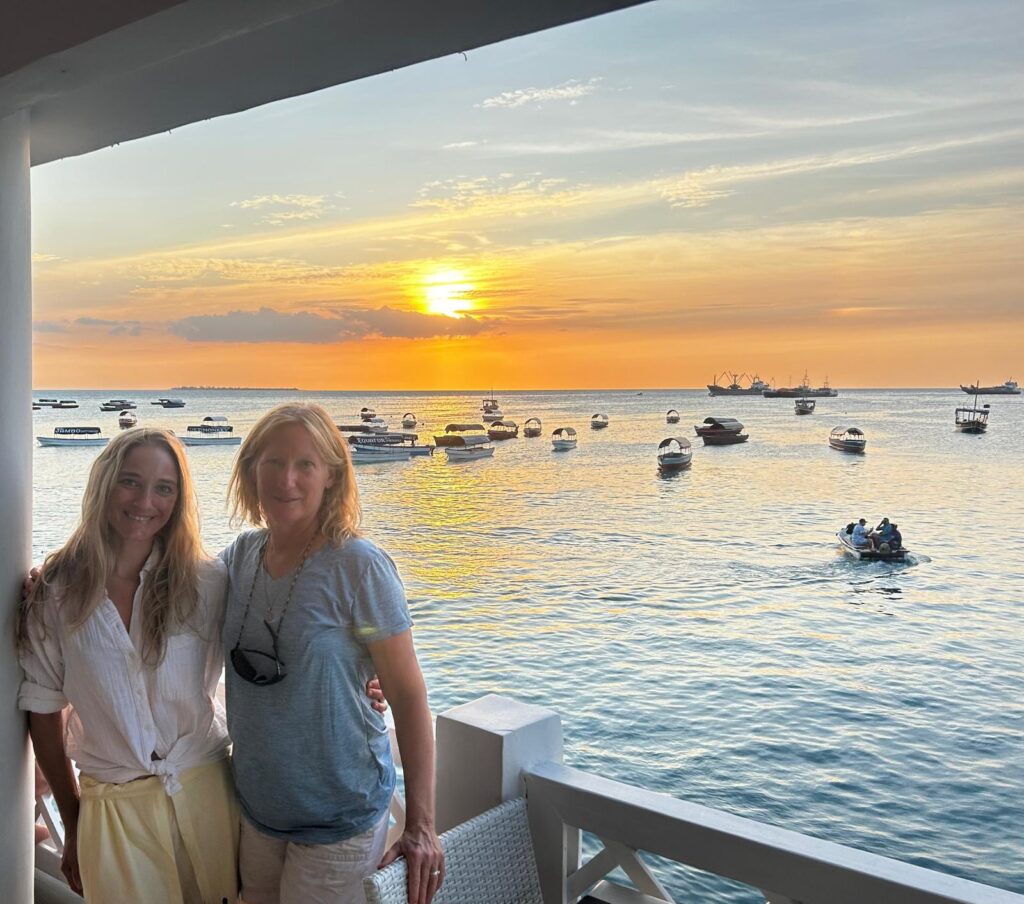
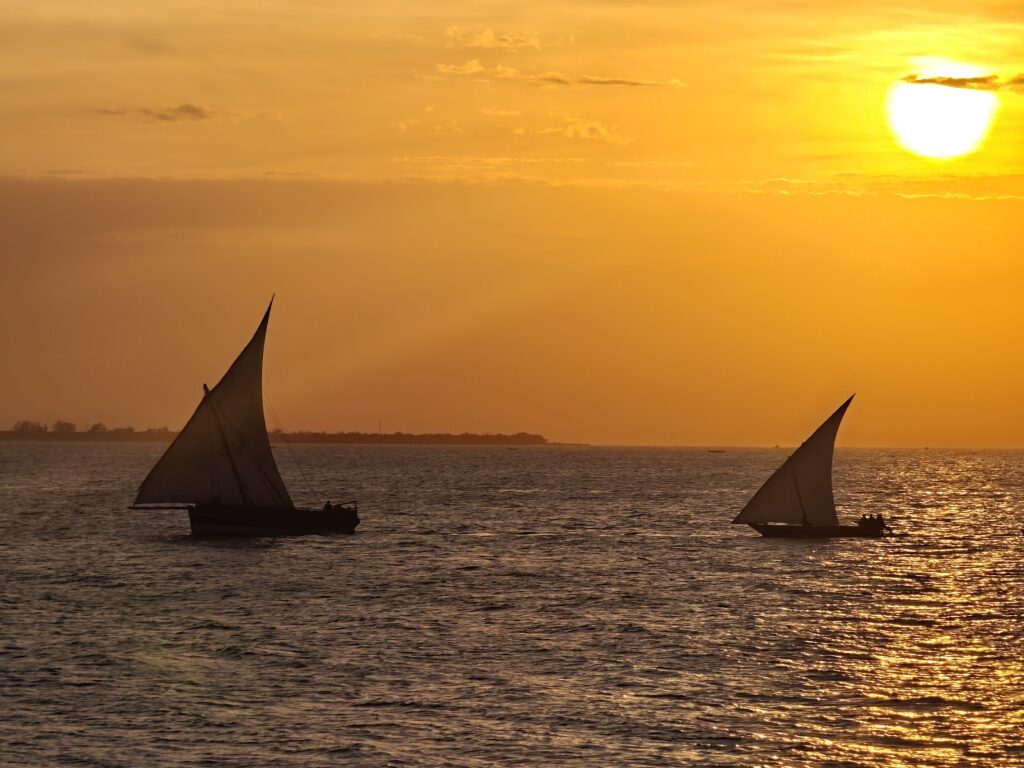
We walked the maize of narrow “streets” (motorcycles and pedestrians only) of Stone Town with a guide to learn some of the history. The town is literally a complex maize of narrow streets and alleys, and it is almost impossible to navigate without getting lost. Here’s what many of these streets and alleys look like before the daily hustle and bustle began:


Most of the tour focused on the architectural history owing to the Arab and Indian cultures that largely built the city, but what I found interesting was that all of the stone buildings were built from coral mined from the nearby coral reefs, which were cut into blocks and mortared together along with a smoothed surface. Given the number and size of the stone buildings here, the construction of this town must have decimated the coral reefs (see the video below for a snippet showing the coral block construction of an historic Omani fort). See the video for footage of an old Omani Arab fort in Stone Town built from coral like the rest of the buildings, but here’s shot of the coral block construction used by locals in a rural farm setting:
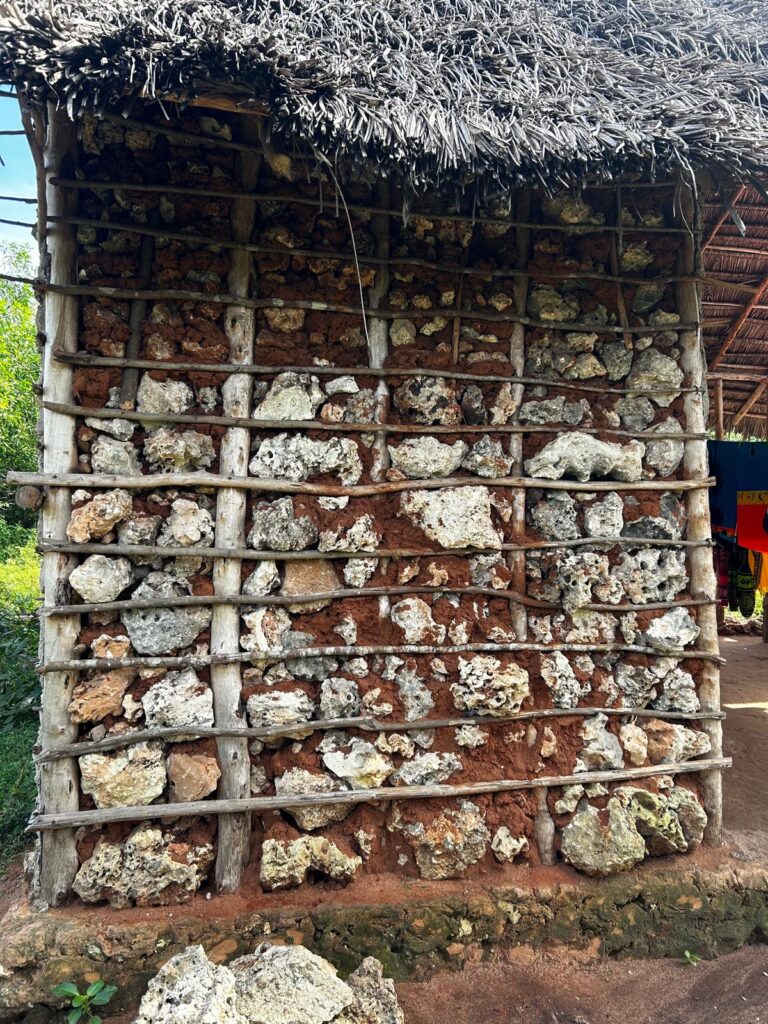
Zanzibar has a rather rich and varied history, and much of it nothing to be proud of. Beginning in 1503, the Portuguese were the first non-native people to colonize the islands and oppress the native bantu people. Portuguese possessed the islands for nearly two centuries. The Portuguese mostly treated Zanzibar as a trade depot and left the local chiefs to rule the people. Eventually, however, after a century and a half of more or less peaceful rule, things changed and the Portuguese exerted a more powerful control over the islands. By the end of the 17th century, the local people had enough of the Portuguese and invited the Arab muslims from Oman to rule the islands, which they did for the better part of two centuries, when the British and Germans started to take over control of the region. These two European powers struggled to dominate the islands until eventually the British won out and it became a Brittish protectorate in 1890, although it remained a sovereign state under the rule of the Arab Sultans, until the British rule ended in 1963 and Zanzibar briefly became an independent nation until it formally merged with the mainland Tanganyika in 1964 to become the Republic of Tanzania.
The dark history of Zanzibar under the Arab Omani rule was the trade in slaves from the mainland. Zanzibar was a major center for capturing and enslaving native black Africans from the mainland for export to the Middle East. Zanzibar was the center of the East African slave trade for two centuries or more, and hundreds of thousands of slaves were marketed here. We visited the site of one of these slave markets in Stone Town and saw the below-ground holding cells where the slaves were kept before sale, and where many died. Here’s a picture of a memorial to the slaves and the slave chamber itself:
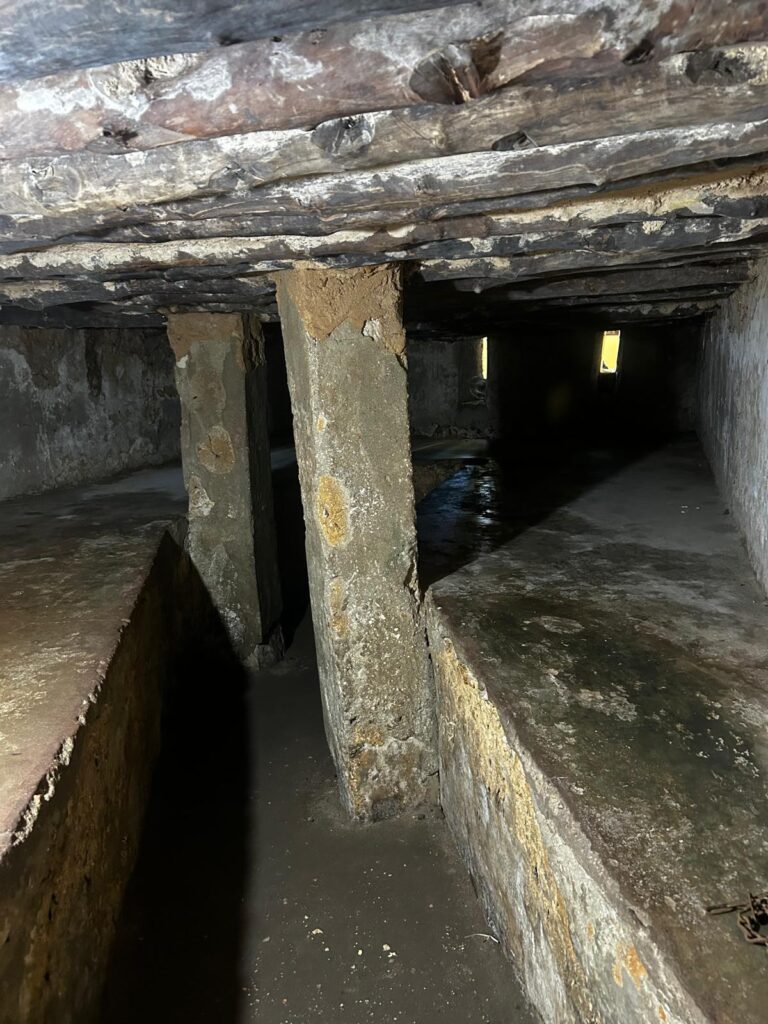

On our second full day we did a snorkling trip on the far side of the island; specifically on coral reefs surrounding a small island named Mnemba owned by Mr. Bill Gates. The trip gave us a chance to see the rural countryside of Zanzibar (i.e., where the locals live and work), which was nice, and the water for snorkling was relatively clear and warm enough for a couple one hour snorkles on different reefs, and an opportunity to walk on some white sandy beach. Here are some photos:

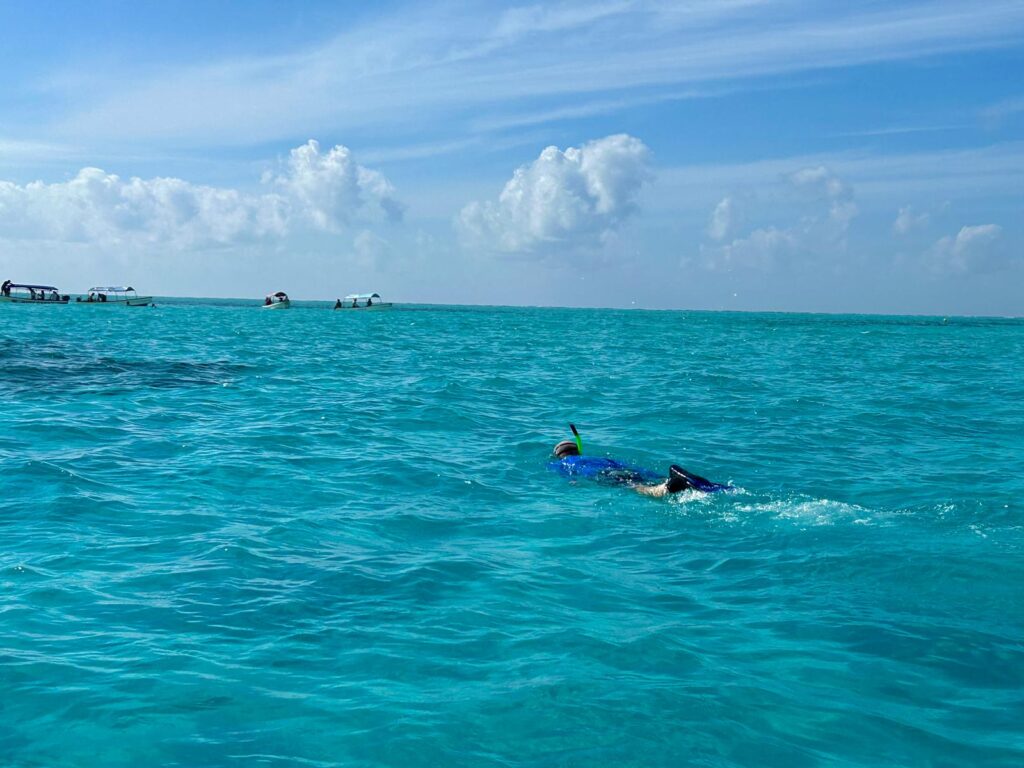
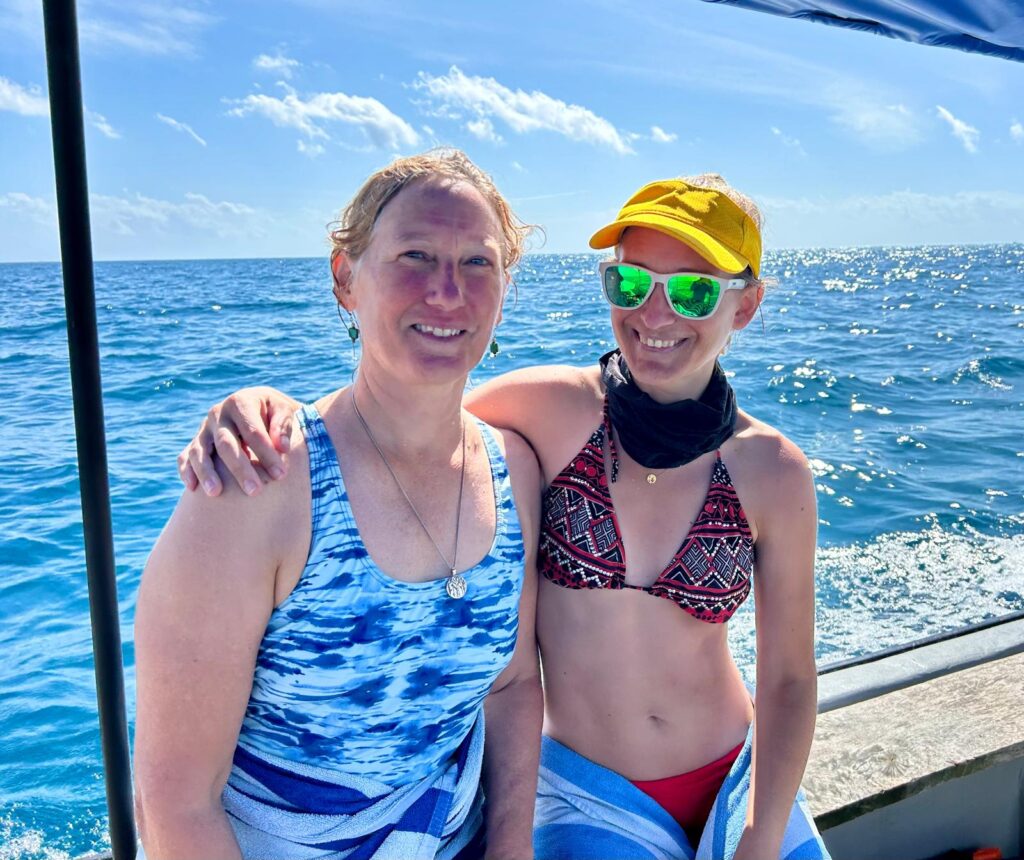
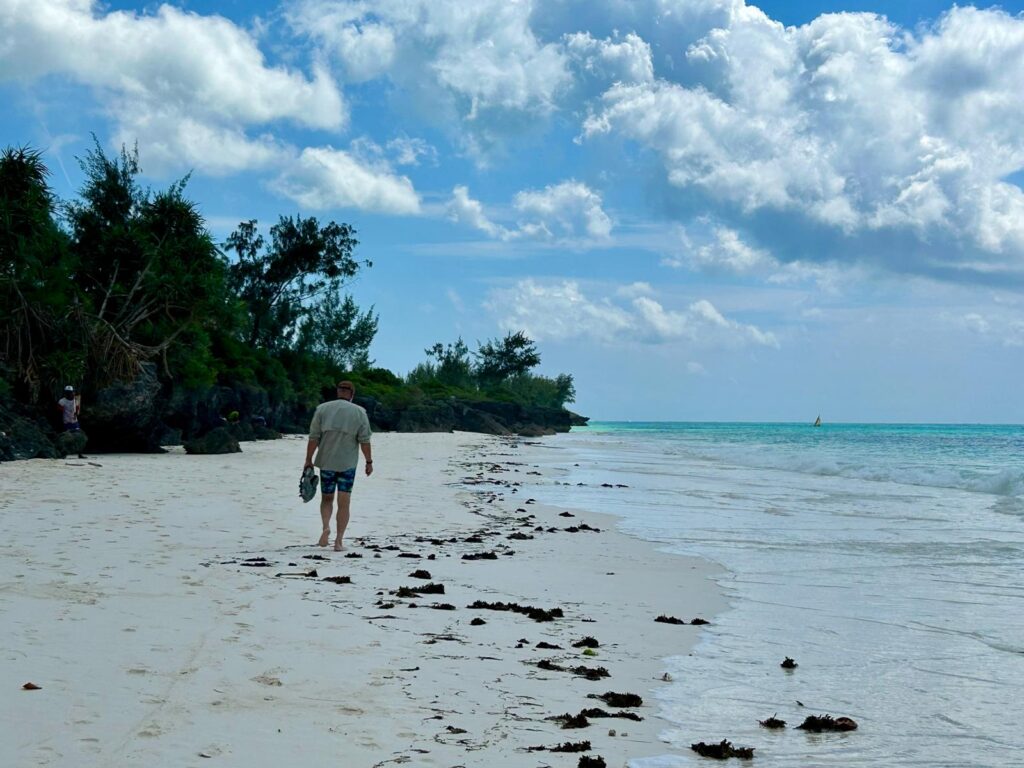
On our third full day we took a guided walk in Jozani-Chwaka National Park, Zanzibar’s one and only national park and a UNESCO Biosphere Preserve. It’s a rather small Park at 19 square miles surrounded by extensive developed land, so it acts as an “island” for many species. You are required to have a guide in the Park and we had a great one, a young man named Thabit who was one of the few guides trained to identify birds. He rarely gets visitors interested in birds as well as other wildlife so he was excited to go birding with us. Almost all visitors come to see the Zanzibar red colobus and Blue (or Sykes) monkeys. We walked the buffer zone of the Park, which is lived on and farmed by locals who get compensated for any animal damage such as lost crops, walked the mahogany forest and the coastal mangrove forest in search of all things animal. We saw lots of new mammal and bird species. A highlight was watching a black and rufous elephant shrew which is 9-12 inches long not counting the tail, essentially the size of a Norway rat, but way more beautiful and interesting. There is a great piece of footage in the composite video below. Another highlight was the close encounters with both species of monkeys, also with some good footage in the video. Here are some photos of our visit, but see the video for more action and narration:

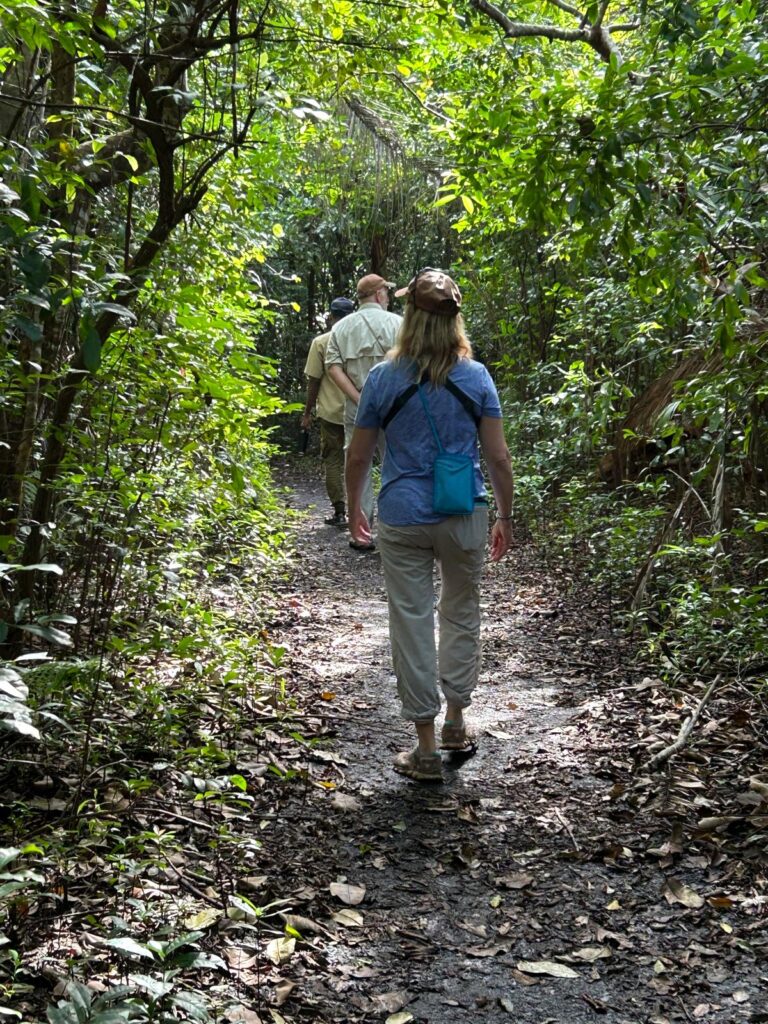
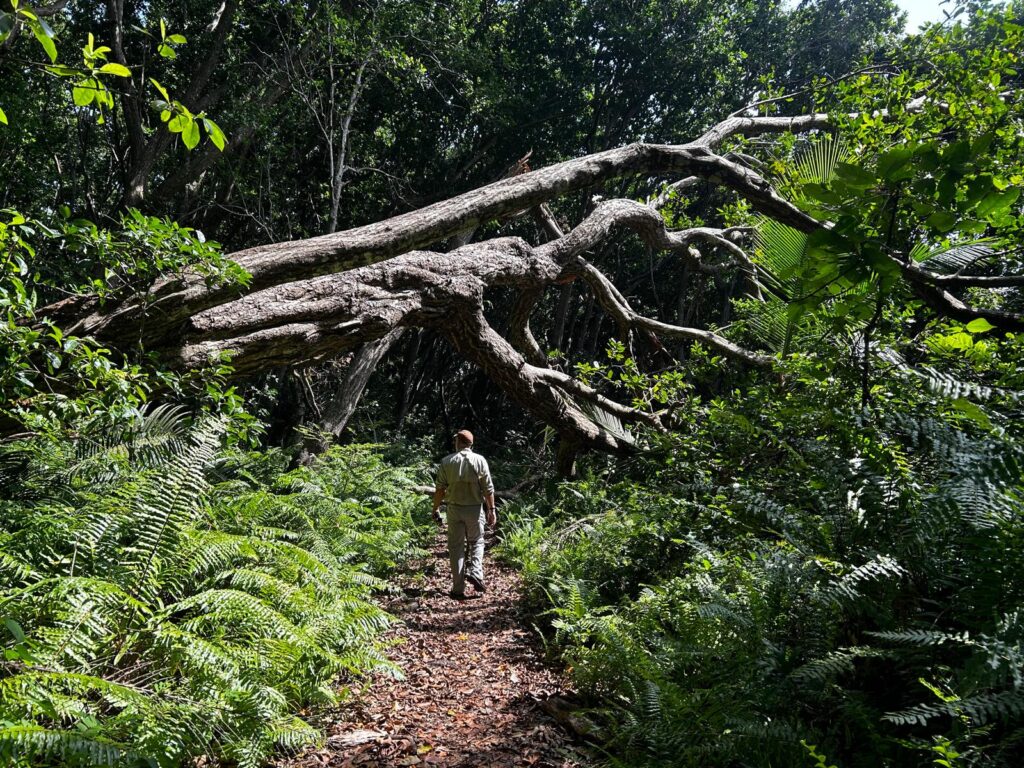
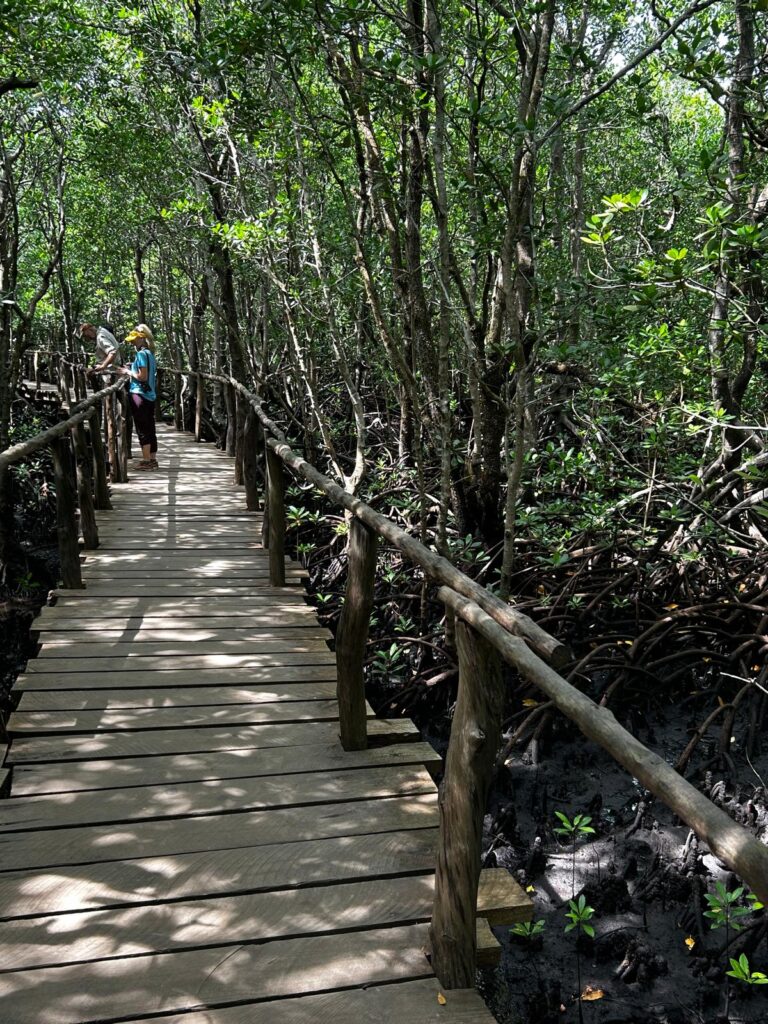
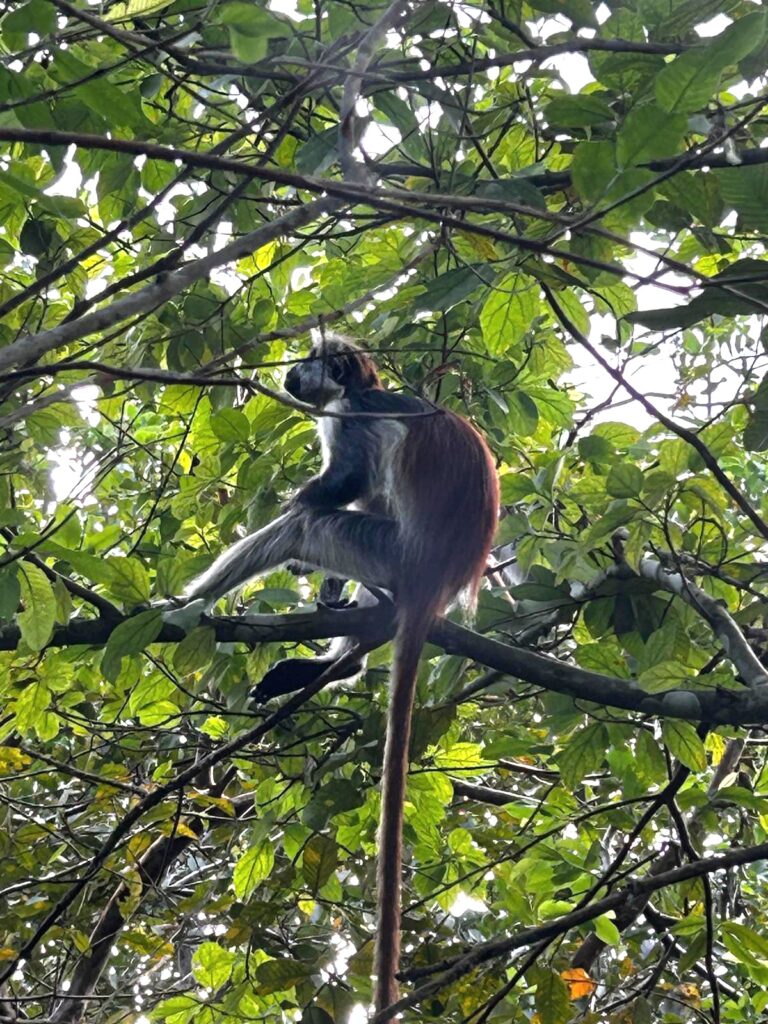
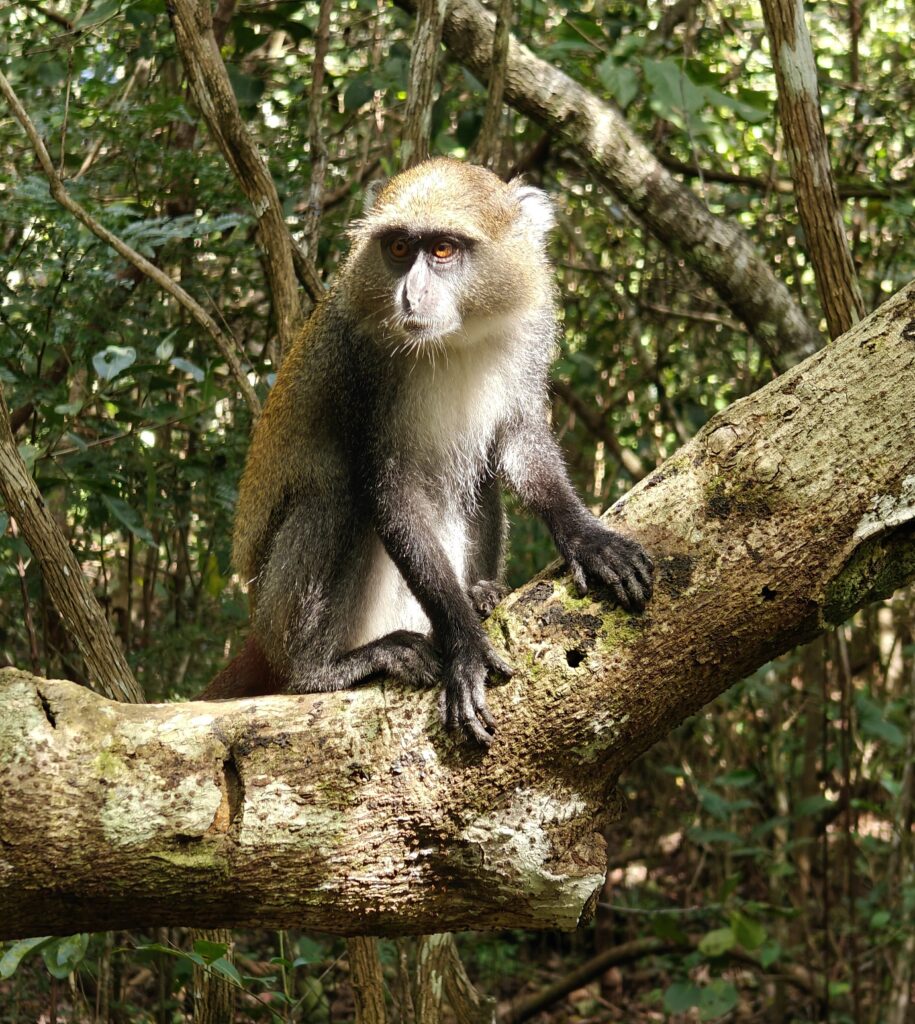

The composite video below has footage of our hotel accommodations plus all of our outings, including our historical walk of Stone Town, our snorkling trip and our visit to Jozani National Park. Be sure to look out for “Einstein” the red colobus – you will know why we dubbed him Einstein when you see him:
Zanzibar composite video (8 minutes)
From the Wildside:

New species:
- Zanzibar red colobus monkey
- Black and rufous elephant shrew
- Aders duiker
- Red-bellied coastal ground squirrel
- Zanzibar sand squirrel
- Brown noddy
- Olive sunbird
- Purple-banded sunbird
- Black-and-white manikan
- Zitting cisticola
- Sombre greenbul
- Red-capped robin-chat
- Green-backed woodpecker
- African crested flycatcher
- Forest weaver
- Green malkoha

Nothing to say but wanted you to know I am loving your posts and I’m enjoying following your journey. Enjoy
Glad to hear it sis! Cheers.
Looks like you’re continuing on an adventurous journey through Africa. Does Caitlin come home now? Looks like you 3 had a nice time in Zanzibar. Like Kara, I enjoy following your post and love the pictures/videos.
Hey Sis, yes, we parted with Caitlin yesterday in Zanzibar. She is on her way back to the states and we are on the coast camping south of Mombasa. Cheers.
ditto to what Kara said! Love reading your blog.
Glad you are out there bro, as I haven’t heard from you in a long while. Cheers.
I love this post – especially the photos!
Glad to do it and, by the way, yes I gave your sister a hug from you. Cheers.
This seemed like a packed 3 days! And a real different experience then being on Safari.
We really enjoyed the video and learning about Zanzibar , its culture and history. we were wondering what happened after the monkey jumped on your head. We can hear Nancy , who was filming say,
“ whoa” when he landed on your head and then it cut off.
Kevin , are they trying to preserve what’s left of coral reefs?
Hey Sis, indeed Zanzibar was very different than being on Safari, but nice side trip as it is a fascinating place with a rich, albeit distasteful, history. Re the monkey on my head, I guess I will have to post the full video that Nancy took instead of the short clip from Caitlin. We made a birthday video for Skylar that has the full footage. Re the coral reefs, yes, they are fully protected now. All the current harvesting of coral/limestone is from land-based quarries. The marine coral here, unfortunately is not in very good shape, at least based on what we saw. Most of it was dead – warming/accidification? Hopefully we will find some healthy coral in the days ahead. Cheer.
I wanted to tag on to what Kara said. It’s great to read your updates and you have a fun writing style!
Wonderful pictures, especially the one with you and Nancy outside your hotel. When I saw the hotel room and bathroom in the video, it reminded me of how much effort some cultures place on adding small intricate details to buildings like the bathroom tile!
What did you do with Green Dragon while you visited this island?